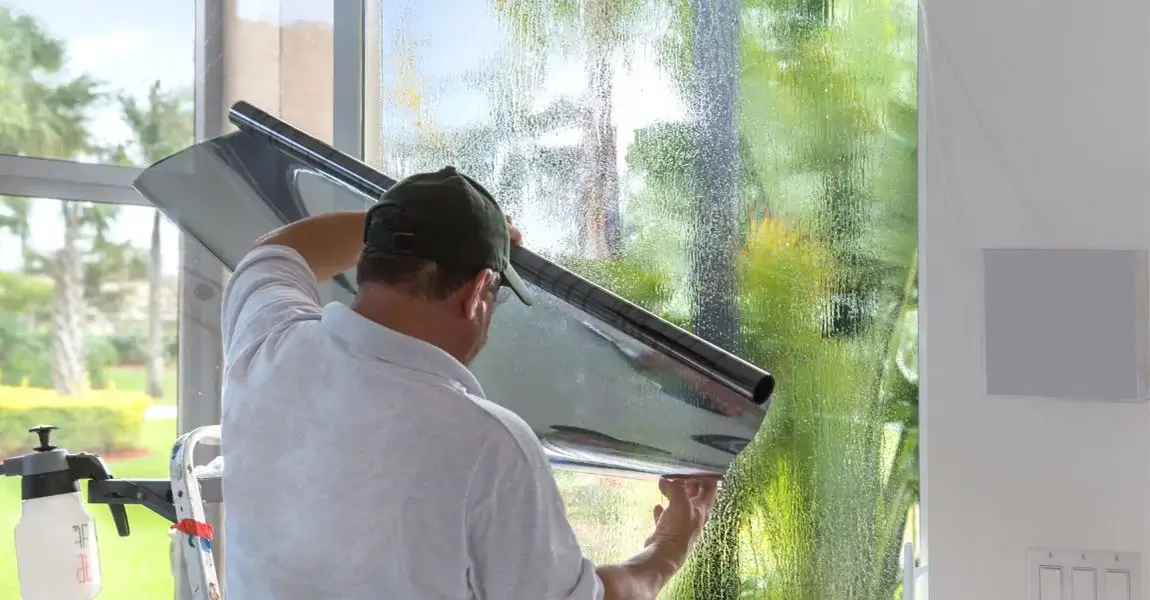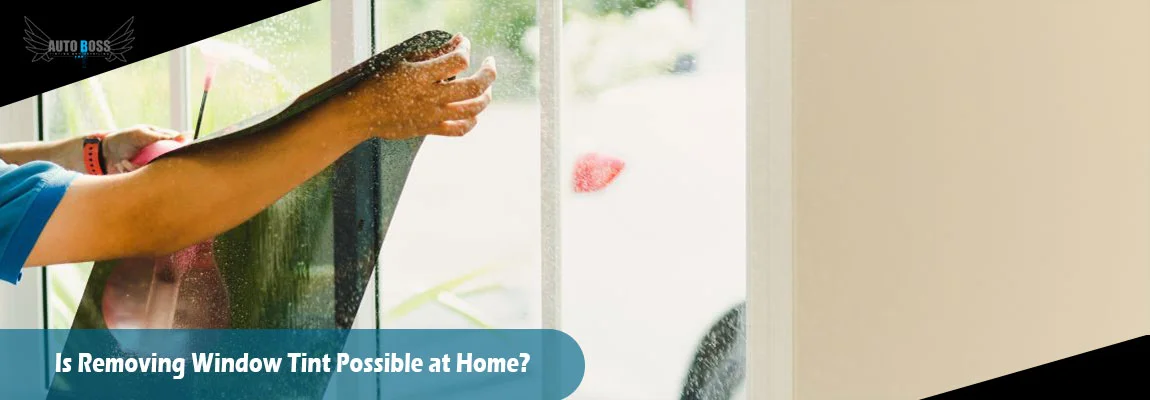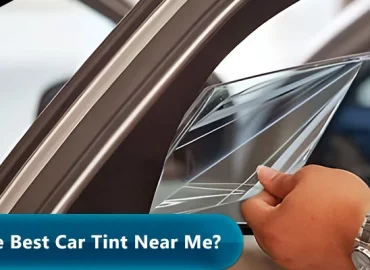Window tinting is one of the popular options for customization of homes. It offers several benefits, including privacy, reduced glare, and improved energy efficiency. However, there may come a time when you want to remove or replace the tint. There can be various reasons, such as changing aesthetics or legal requirements. While professional tint removal services are available, many people wonder if they can tackle the task at home. Here, I will guide you through the process of removing window tint. I will also discuss whether it’s workable to do it yourself.
Understanding Window Tint
Before diving into the process, it’s essential to understand what window tint is and how it works. Window tint is a thin, multilayered film. We apply it to the interior or exterior surface of windows. It consists of a base layer, an adhesive layer, and a top coat with varying degrees of tint or darkness. The primary purposes of residential window tint are to reduce heat, block harmful UV rays, and provide privacy.
Reasons for Removing Window Tint
Several reasons may prompt you to consider removing window tint:
Aesthetics
Over time, window tint can fade, discolor, or develop bubbles and creases. These reasons make your home look unkempt. Removing old tints can rejuvenate the appearance of your windows.
Legal Compliance
Window tint laws vary by location, and sometimes, existing tints may not comply with local regulations. If you receive a citation or want to avoid potential legal issues, you may need to remove or replace your tint.
Damage or Wear
Accidents or damage, like scratches or tears, may cause its removal and replacement.
Better Visibility
Excessively dark tint can impair visibility, especially during nighttime driving. Removing or replacing the tint with a lighter shade can improve safety.
Can You Remove Window Tint at Home?

Yes, you can remove window tint at home. But, it’s necessary to understand that the process can be challenging and time-consuming. It will also need specific tools and techniques. Here’s a step-by-step guide to help you navigate the process:
Tools and Materials You’ll Need
Heat Gun or Hair Dryer: A heat source is essential to soften the adhesive between the tint and the window.
Razor Blade or Utility Knife: You’ll need a sharp blade to peel off the tint.
Plastic Scraper: A plastic scraper helps remove the tint without scratching the glass.
Ammonia-Based Solution: A solution made with ammonia can dissolve the adhesive. It makes peeling off the tint easier.
Spray Bottle: To apply the ammonia solution.
Old Newspapers or Trash Bags: These will help protect your home during the process.
Rubbing Alcohol: To clean any residue left on the glass after tint removal.
Steps to follow for removing window tint
Here are steps that you can follow for removing window tint:
Step 1: Prepare Your Work Area
Start by protecting the interior of your home. Lay down old newspapers or trash bags to catch adhesive or tint remnants. Make sure your work area is well-ventilated.
Step 2: Heat the Tint
Warm the tint by using a heat gun or hair dryer. Hold the heat source a few inches away from the tinted surface and move it around evenly. Heating the tint will soften the adhesive, making it easier to peel off.
Step 3: Begin Peeling
Once the tint becomes pliable, start peeling it from one corner. The razor blade is the best option to get under the edge and lift it away from the glass. Be cautious not to scratch the glass during this process.
Step 4: Continue Peeling
Continue to peel the tint, keeping it warm with the heat gun as needed. Apply more heat if you encounter resistance or stubborn spots. Use the plastic scraper to help lift the tint.
Step 5: Remove Adhesive Residue
After removing the tint, you may notice adhesive residue left on the glass. To get rid of this residue:
- Use an ammonia-based solution.
- Spray the solution on the residue and let it sit for a few minutes.
- Scrap it off with a plastic scraper or a razor blade.
Step 6: Clean the Glass
Clean the glass with rubbing alcohol to complete the process. Rubbing alcohol is helpful in removing any remaining residue. It ensures a clear, streak-free surface.
Challenges of DIY Window Tint Removal

While it is possible to remove window tint at home, there are several challenges and potential pitfalls to consider:
Adhesive Residue
Removing the tint is only part of the job. Dealing with the adhesive residue can be tricky. It may need many rounds of cleaning and scraping.
Risk of Glass Damage
Using sharp tools like razor blades carries the risk of scratching or damaging the glass if not used carefully.
Time-Consuming
The process is time-consuming, especially if you have many windows to tackle. Be prepared for a potentially lengthy project.
Professional Results
Achieving a clean and clear result like professional window tint removal services can be challenging.
When to Consider Professional Tint Removal
While DIY tint removal is possible, there are situations where it’s better to leave the job to professionals:
Multiple or Large Windows
If you have a large number of windows to work on, especially in a commercial building, hire a professional service.
Curved Windows
Vehicles with curved or complex-shaped windows can be challenging to work on without the proper tools and experience.
Safety Concerns
Working on elevated windows or hard-to-reach areas in a home can be dangerous. Professionals have the necessary equipment and safety protocols.
Time Constraint
If you need the tint removed or lack the time for a DIY project, professionals can complete the job faster.
Conclusion
Removing window tint at home is possible. It is a task that requires patience, the right tools, and careful attention to detail. You can save money by doing it yourself. However, there are situations where hiring a professional tint removal service is a practical choice. Consider your specific needs, the complexity of the project, and your skill level before deciding whether to tackle window tint removal as a DIY task or leave it to the experts. Regardless of your choice, the goal is to have clear, clean, and compliant windows to improve the car’s or building’s aesthetics and functionality.




